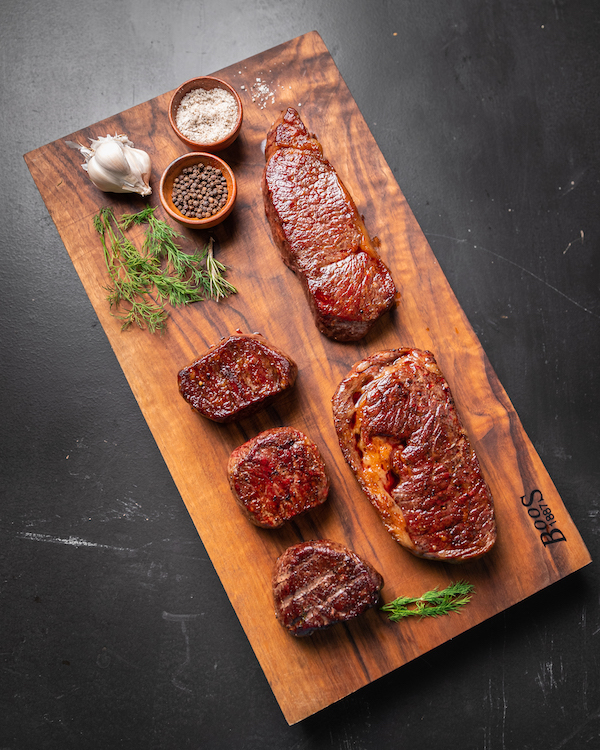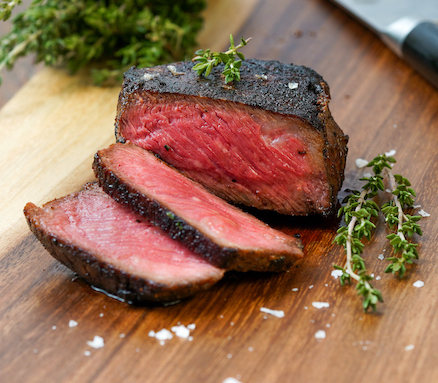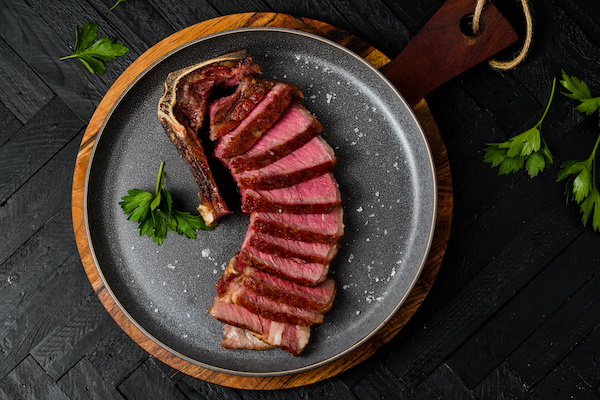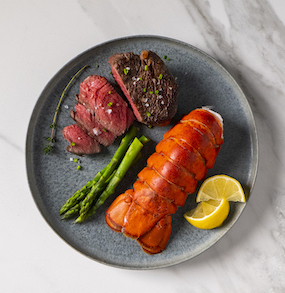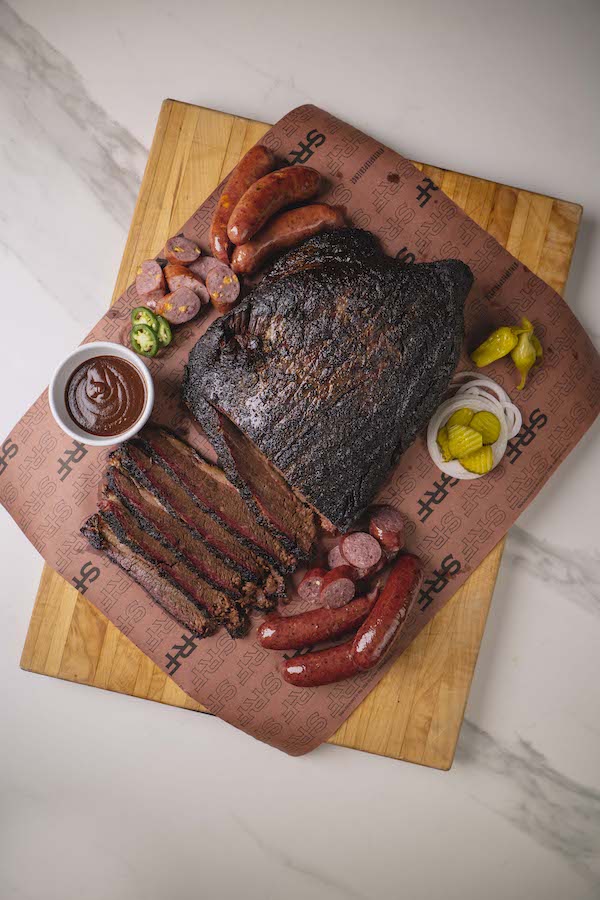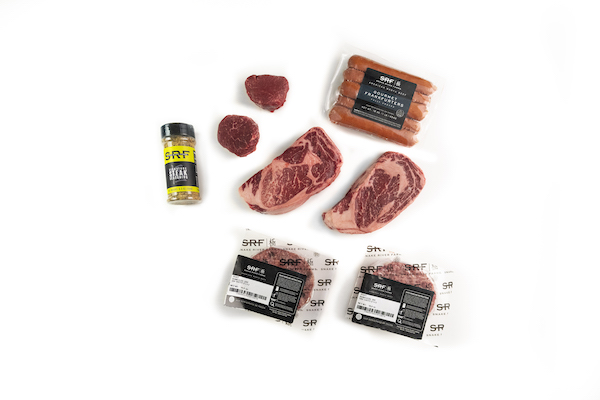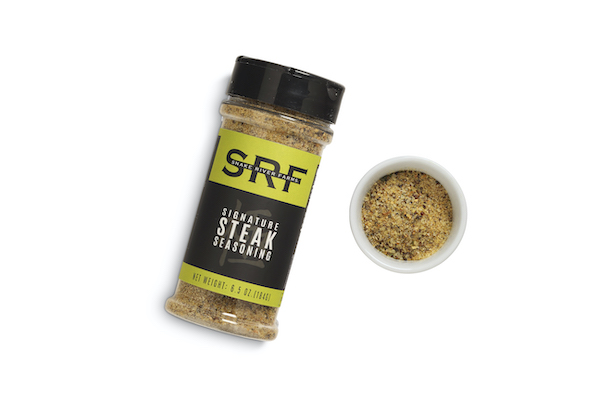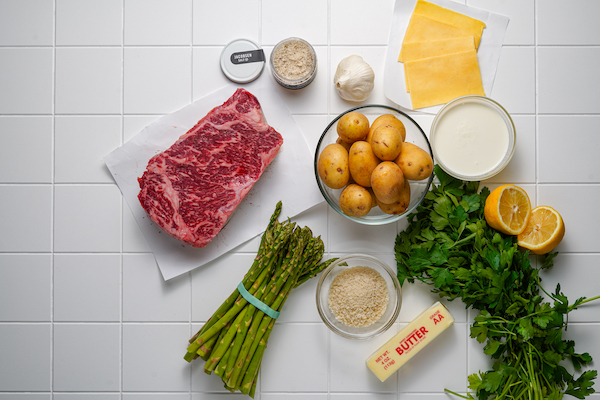The Meaning of Meat Terms
Understanding the words and phrases printed on beef labels helps select the products to match your personal preferences and expectations. By digging deeper, you’ll find the terms used to describe meat have very specific meanings.
It’s important to consider each term on its own merits and not make assumptions. Specific terms have defined attributes and consumers sometimes add their own meaning. An example is reading the word “natural” on the label of a steak and assuming it is also organic. This is not true, so a little knowledge goes a long way to get the right product for your table.
Here are some of the most common terms and their definitions you’ll encounter in stores and online:

Natural Beef
If a steak is natural, it must be good. Right? After all, who wants unnatural beef? “Natural” describes most beef sold. Any fresh or frozen beef is natural, if it is minimally processed, and no artificial ingredients or colors are added. It is a good characteristic but almost all beef sold falls into this category.
Minimally Processed
The definition of minimally processed is: “nothing artificial or synthetic (including all color additives regardless of source) has been included in, or has been added to, a food that would not normally be expected to be in that food.” Any whole muscle cut steak or roast is minimally processed so this is important but not a major point of difference.
Never-Ever Program
The Never Ever program is a voluntary USDA standard to indicate livestock has never received antibiotics or added hormones at any time.
USDA Certified Organic Beef
Certified organic beef, like organic produce, follows very specific guidelines set in place by the National Organic Program. Cattle must be raised on certified organic land that meet organic crop production standards. They must be fed 100% certified organic, GMO-free feed with no added growth hormones, antibiotics or animal by-products.
Grass Fed
Like the name implies, grass fed cattle consume grass and forage throughout their entire lifetime, except for the milk they drink before weaned. The USDA allows grass and forage in the diet, defined as “grass, forbs (e.g., legumes, Brassica), browse, or cereal grain crops in the vegetative (pre-grain) state”. The guidelines also prescribe continuous access to pasture during the growing season.
While consumers might envision animals grazing on green grass like a golf course fairway, grass and forage covers a much wider definition. Grass pellets and sileage can be fed to cattle during the winter or dry season.
Grass-Fed, Grain Finished
All cattle feed on grass during their first 8 to 12 months. Grain-finished cattle, like grass- finished cattle, spend the majority of their lives eating grass and forage in pastures. When beef is grain-finished, cattle in the post-grazing phase eat a diet of grain and local feed ingredients. At Snake River Farms, these local rations include a balanced diet of potato, grains, sugar beets, vitamins, and alfalfa hay.

Humanely Raised
The beef industry strives to raise cattle in a humane manner; however, this term has no official definition. Check with your individual beef suppliers to learn their specific plans. Snake River Farms has established a powerful commitment to animal well-being that recognizes livestock as the foundation of our livelihood. We have a documented program for all employees and processes to treat our animals with dignity and respect throughout their lifecycle as followed the Beef Quality Assurance (BQA) program. We proactively implement the best animal care practices from leading behavior and husbandry experts to ensure animal health and well-being.

Antibiotic Usage
Throughout the beef industry, antibiotics may be administered to prevent or treat disease in cattle. A withdrawal period is required from the time antibiotics are used until the time of harvest, so any trace amounts have time to pass completely through the animal’s system. This amount of time varies by the specific antibiotic used. The Food Safety and Inspection Service (FSIS) of the USDA randomly samples cattle to test for antibiotic residue. The published FSIS Monitoring Plan data shows a very low percentage of residue violations.
Snake River Farms does not use antibiotics as a preventative measure. If an animal gets sick, antibiotics are administered as part of our humane treatment program. The withdrawal period for the specific antibiotic is observed, which can take up to 45 days .

Conclusion
Terminology and labels utilized by the USDA and meat companies help guide your purchases at the grocery store, meat market and online. The terms tell a big part of the story, but sometimes don’t provide the full picture. There are many factors to consider including cattle breed, grade and cut, as well as ethical and environmental considerations.
Finding a producer of high-quality beef and talking directly to them is the best way to find the perfect match for your personal preferences. At Snake River Farms, we prioritize the health and well-being of our animals and work at transparency. We welcome questions through email, chat or phone call.


